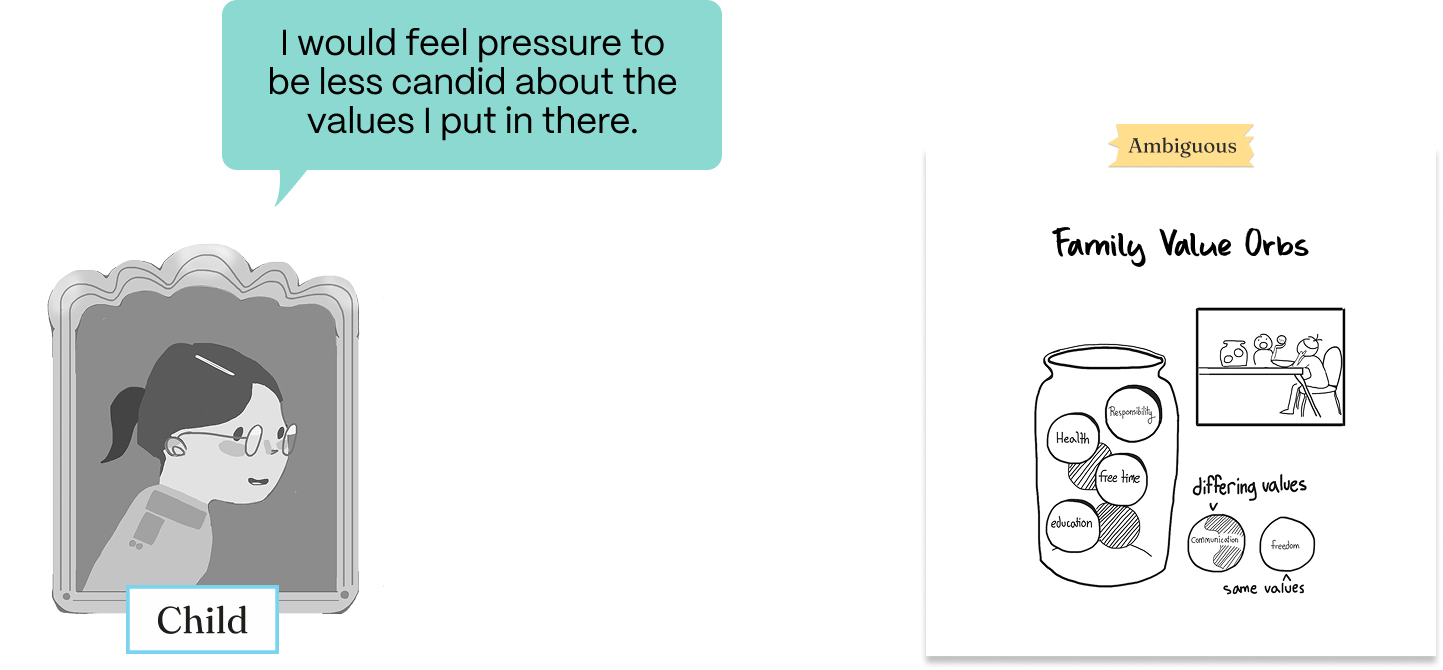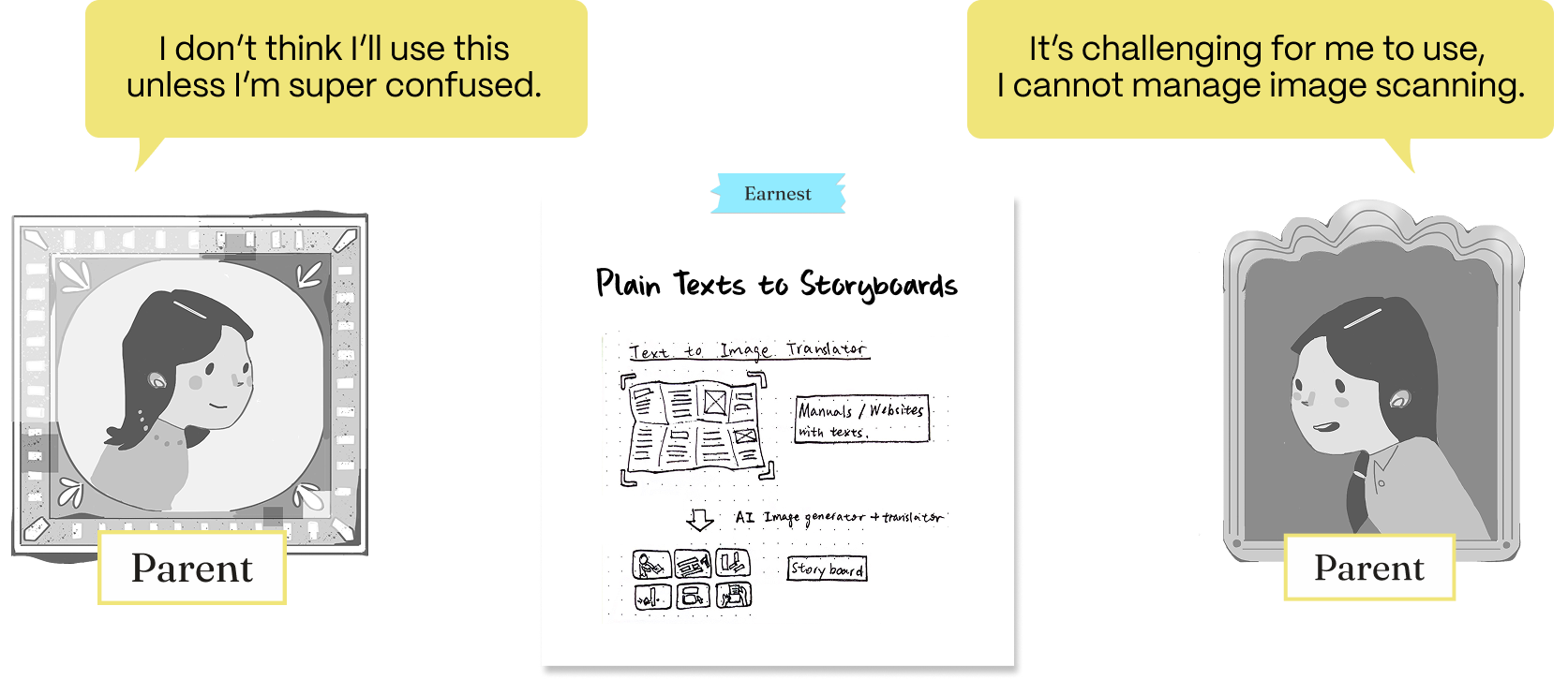Design Research on Asian Immigrant Parents and Adult Children’s Care Relationship
9-week class project | Team of 3 designers+researchers | Responsible for conducting research and creating design suggestions
When you think about care relationships within an Asian family, certain images might come to mind:
"Asian parents give fruit to their child after an argument instead of apologizing verbally."
"The Asian tiger moms who strictly drive their children to excel academically."
The struggles of children acting as language brokers for their immigrant parents.
Children of immigrant parents assume care responsibilities, such as language brokerage, that influence the dynamics of the parent-child relationship.
How children experience and perceive their relationships with their Asian immigrant parents.
While these narratives are prevalent,
The problem is not that they are untrue, but that they are incomplete.
We realized that the parents’ stories are neglected as current research primarily focuses on the children's perspective:
[Screenshots of articles on Asian parent-child relationship]
This missing perspective is the gap we sought to explore:
How do adult children and their immigrant parents perceive and reflect on their mutual caregiving roles?
What are the tensions & benefits of language brokering between adult children and their immigrant parents, and how does it shape their caregiving relationship?
Parents: Immigrants from China and South Korea, around 50 years old, beginner to intermediate in English.
Children: Grew up in the U.S. or moved to the U.S. at a young age, college students aged 20–22, fluent in English.
Aiming to balance perspectives from both sides of the care relationship,
We engaged with 3 parent-child pairs and 3 children as research participants,
Key insights and problem statements from interviews:
#1 Both children and parents found mediation a frustrating experience, especially with a third party such as a car mechanic, grocery store worker, etc... Children are drained by tasks like translation and coordination, while parents feel helpless due to language barriers.
This was identified as a major pain point and negative experience for both parents and children.
Based on our research data, we set up a help process model, which uncovers the specific frictions and the design opportunity to streamline the process.
#2 There’s a lack of cultural relatability between parents and children, which makes it hard for them to be intimate or understand each other’s values and perspectives.
Parents emphasized that this challenge significantly hindered intimacy with their children.
Designing for this issue could have a profound impact on family dynamics.
We prioritize the above 2 problems to focus on because
they are the most common and urgent problems defined by participants, based on the examination of their needs, goals, and pain points, and the patterns throughout all participants.
[One of our participant postcards]
[Our whiteboard of participant data]
Prioritizing the problem spaces with the most design opportunities,
we made these design suggestions…
Bring forward positive emotions of mediating
Reframe mediation as a trust-building exercise that fosters responsibility and strengthens bonds.
Mutually balanced autonomy & dependency
Establish boundaries that honor both independence & connection, fostering a shared “love language”.
Bridge Generational and Cultural Differences
Promote mutual understanding of cultural values and personal perspectives for the parent and child, celebrating their shared cultural roots.
We initially ideated 15 ideas, prioritizing urgent pain points / the most brought-up patterns among participants
such as easing mediation, understanding cultural differences, and emotional intimacy.
To validate design concepts and ensure that both parent’s and children’s needs are met, we engaged in early-stage testing with user feedback. Some of the feedback we got were:
A child’s favorite is not a parent’s favorite, and vice versa.
Side effects related to the root problem may come out with the design solution.
Parents and children need motivation to actually take action and use a product.
💡Reflection & Learning Points:
Relying solely on interviews can miss nuanced experiences. Supplementing with diary studies or other methods uncovers overlooked details, as diverse research approaches complement each other's limitations.
Craft Questions Thoughtfully
The phrasing of our interview questions sometimes led participants to share only one aspect of their reality, overlooking others. I learned to craft questions thoughtfully, foster open conversations, and listen patiently, recognizing participants as the true experts of their experiences.







